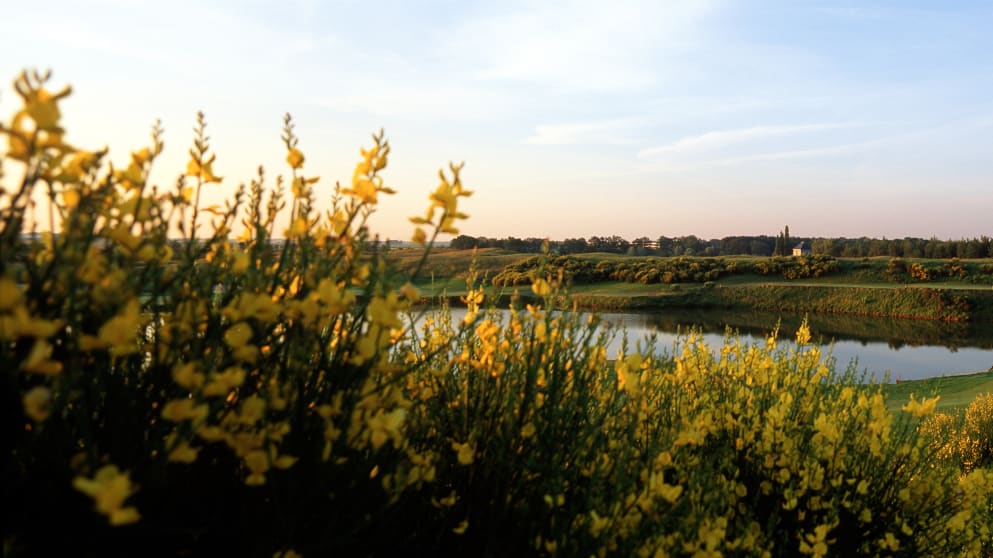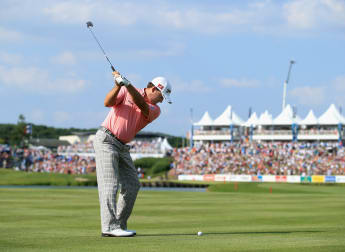By Will Pearson, europeantour.com
at Le Golf National
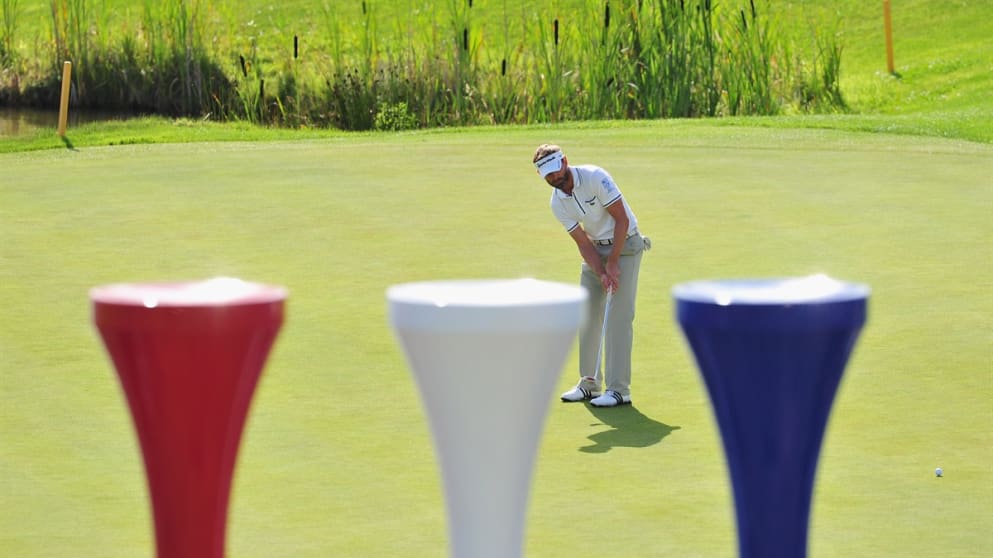
Ahead of the upcoming Alstom Open de France, europeantour.com explores long-time host venue Le Golf National with the help of home favourite Raphael Jacquelin…
Situated on the outskirts of historic Versailles near the French capital of Paris, Le Golf National this week welcomes Continental Europe’s oldest – and richest – National Open Championship for a 22nd time.
The renowned L’Albatros course, designed by architects Hubert Chesneau and Robert Von Hagge, has hosted all but two of the last 24 editions of the Open de France since opening its doors in 1990 and enhanced its already-flourishing reputation by becoming a Destination in the glittering network of world-class golfing venues assembled by European Tour Properties.
Set to host the biennial Ryder Cup in four years’ time, Le Golf National is a lush, sprawling property with stadium views, slick greens, undulating fairways plus a variety of different size water hazards and innumerable links-style bunkers, while the layout has consistently been ranked inside the World Top 100 and European Top Ten golf courses.
Frenchman Jacquelin will this week contend his 18th consecutive Open de France – 16 of which he has played here in Saint-Quentin-en-Yvelines – and has a best finish of third back in 2012.
Back in 1993, meanwhile, a then 19 year old Jacquelin triumphed at Le Golf National in the Champion de France Juniors so the four-time European Tour winner is well-placed to comment on the unique challenge facing this week’s world-class field.
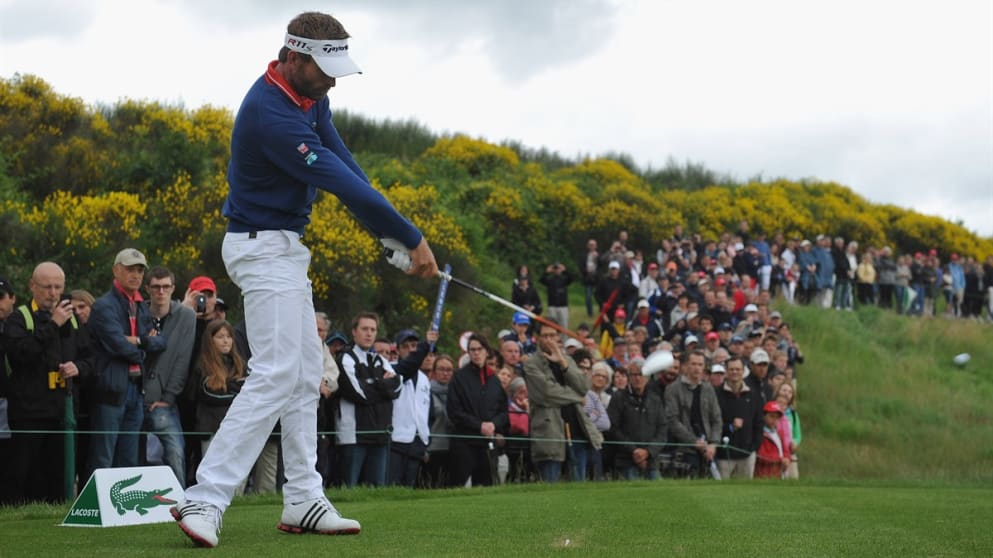
Overview
“What can I say about the Albatros, I’ve played it a lot of times,” says 40 year old Lyon native Jacquelin. “I remember winning here 21 years ago but they have made a lot of changes since then.
“The course looks great condition-wise, though, and the greens are great and fast already. The only thing you could say is that perhaps there has been a little bit too much rain over the last week so it’s a little soft. I was speaking to (Tournament Director) Jean Van de Velde and he was expecting it to be a bit firmer but overall it’s the best I have seen it in a long time.”
Hazards, hazards
The wet stuff plays quite a role at Le Golf National, with water in play on no fewer than six holes – the first, second, 13th, 15th, 16th and 18th – so staying clear of those is priority number one, as Jacquelin attests.
“There is a lot of water in play – that’s how it’s always been here and that is how it will always be here!” he continues. “So you have to stay dry if you want to score well – that’s the first key. The rough looks like it might be a little easier than last year but even so it is still thick and tough so you had better put the ball in play.”
Incidentally, the numerous lakes here at Le Golf National are full of some of the largest carp in this part of the world, fed almost exclusively on the grass clippings from the golf course.
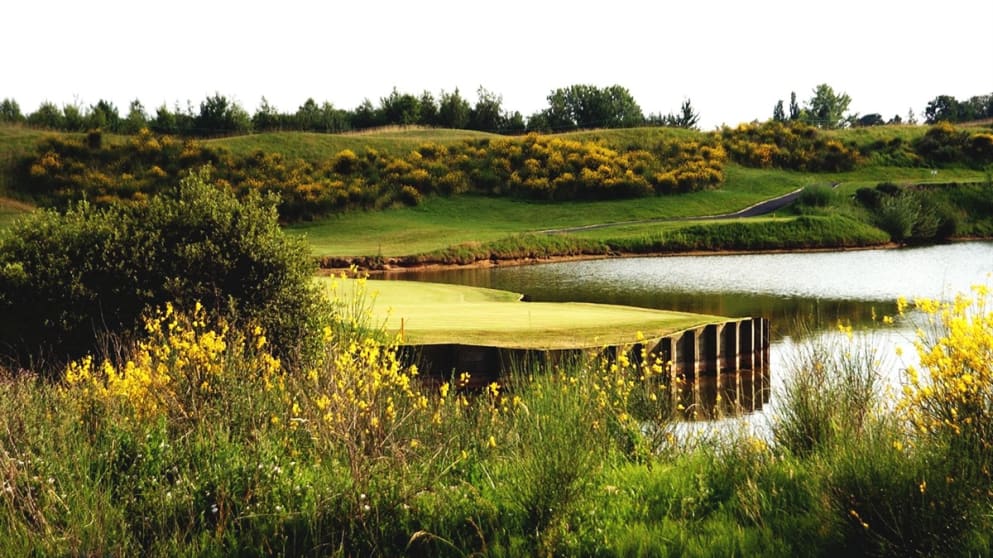
Greens
“The greens are going to be fast, that’s for sure,” Jacquelin reflects. “They are huge greens here which gives the organisers a lot of options for pin placements so they can make whatever they want in terms of making us play holes longer or shorter. But they are not easy greens so you have to be accurate in every part of your game.”
The Key Holes
A Big Start
“The opening first two holes are always tough,” he says of the par four first and 213-yard par three second. “The second shot on the opening hole is the tricky one. If you hit a good drive, or three wood perhaps, you don’t have a long iron in but the wind can swirl a bit and when you are down there and the gusts are changing then you have to find the right distance into a green which has a lot of water left.
“And the second hole, what can I say, it’s a long par three over the water. Tough hole, tough start.”
A Bold Finish
“L’Albatros’ ‘Amen Corner’ is the first two holes and then from 15 to 18,” says Jacquelin. “There is water in play on every shot except on 17, which usually plays as a pretty long par four so if you miss the fairway there it’s difficult to make a four.
“But for 15, 16 and 18 you have all that water in your sights at all time. They are more holes you survive rather than score on but it makes for a thrilling finish for the crowds – that’s for sure.”
How it played last year
It is safe to say that finding the greens in regulation on L’Albatros is of paramount importance, as exemplified by 2013 winner Graeme McDowell.
The Northern Irishman ranked top in GIR last year with 79.2 per cent en route to a nine under par winning total of 275 – four clear of his nearest challenger, South Africa’s Richard Sterne – and was a picture of consistency 12 months ago.
McDowell made 13 birdies and just four bogeys on his way to claiming a second European Tour title of the season in 2013 – but, importantly, five of those gains came in a superb final-round 67.
Unsurprisingly, the 470-yard par four 18th ranked most difficult last year at 4.58, having yielded just 22 birdies all week, while easiest in 2013 was the long third, which gave up seven eagles and 193 birdies.
